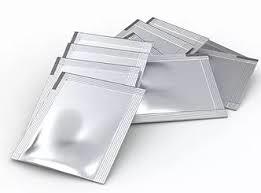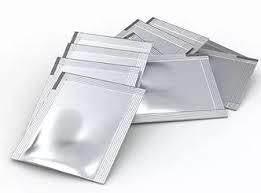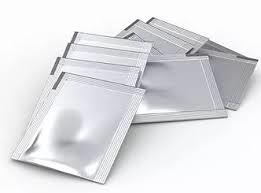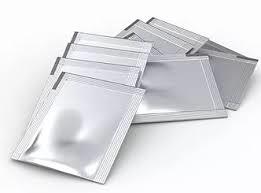
Lactitol Monohydrate + Ispaghula Husk Granules
6 INR/Piece
Product Details:
- Drug Type General Medicines
- Physical Form Powder
- Dosage 3.5-5
- Dosage Guidelines GM
- Storage Instructions Dry place
- Click to view more
X
Lactitol Monohydrate + Ispaghula Husk Granules Price And Quantity
- 300 Box
- 6 INR/Piece
Lactitol Monohydrate + Ispaghula Husk Granules Product Specifications
- 3.5-5
- Dry place
- General Medicines
- GM
- Powder
Lactitol Monohydrate + Ispaghula Husk Granules Trade Information
- Cash in Advance (CID) Cash Advance (CA)
- 300 Box Per Month
- 1 Months
- Yes
- Sample costs shipping and taxes has to be paid by the buyer
- Western Europe South America Middle East Central America Asia Eastern Europe North America Australia Africa
- All India
Product Description
This combination is provided by combining a bulk-forming laxative in the form of psyllium husk (Ispaghula husk) with an osmotic laxative such as lactitol for Idiopathic constipation and is used to prevent or treat constipation.Constipation is a common problem which can be caused by a number of things. Not eating enough fiber or not drinking enough fluid can cause constipation. Some conditions can cause constipation such as such as pregnancy or lack of exercise or movement (such as being ill in bed) or some medicines.
It is a common problem for adults and pediatric patients and can generate considerable suffering for patients due to both the unpleasant physical symptoms and psychological preoccupations that can arise.
In this combination, Lactitol is an osmotic disaccharide laxative that increases fecal volume and stimulates peristalsis.
Ispaghula husk helps relieve constipation and as a laxative, works by increasing the bulk of stools, which encourages bowels to move the stools through digestive system, which in turn relieves constipation.
Bulk-forming laxatives absorb water and expand in the colonic lumen; in contrast, osmotic laxatives retain water in the colonic lumen by osmosis. So, both laxatives act to retain water in the colonic lumen thereby counteracting the normal dehydrating action of the colon. By suppressing the dehydration action of the colon, the osmotic laxative produces a fecal stream which is softer, bulkier and easier to expel.
These laxatives also help to produce formed stools, without any systemic toxicity.
Indications:
- Constipation
- Fissures
- Haemorrhoids
- Pregnancy
- Pre- and post-operative conditions
- Mild to moderate hypercholesterolaemia
- Prevention of hepatic encephalopathy
- Chronic cholecystitis
- Acidity
- Anorectal disease
- Irritable bowel syndrome
- Inflammatory bowel disease or other types of diarrhea
Mechanism of action:
Bulk-forming laxatives such as those formed from psyllium husks provide generally safe and effective laxatives. Bulk-forming laxatives rely upon the use of dietary fiber. Dietary fiber is the portion of plant materials that is resistant to digestion. There are generally two types of dietary fiber: insoluble and soluble. Insoluble dietary fiber passes through the digestive system in a substantially intact form. Insoluble fiber passes through the digestive system quickly because it does not absorb water, like soluble fiber. In contrast, soluble fiber absorbs water in the small intestine and in the stomach. Psyllium is one source of soluble fiber. Specifically, the psyllium form known as psyllium hydrophilic mucilloid consists of the husk (either milled or unmilled) of blond psyllium seeds. When exposed to water in the stomach and small intestine, the psyllium hydrophilic mucilloid forms a gelatinous mass which aids in the treatment of constipation by acting as a fecal softening agent and also acts to soothe and protect the small intestine.
Lactitol may be used as an osmotic laxative because it is not absorbed in the small intestine and is thereafter hydrolysed and fermented in the large bowel by the action of intestinal microflora resulting in the liberation of galactose and sorbitol which are thereafter metabolized to organic acids and short chain fatty acids by colonic anaerobes. An osmotic effect is created in the colon, which normally acts to hydrate the fecal stream. The reduction in the dehydrating action of the colon produces a softer, bulkier fecal stream. Lactitol exhibits other properties which makes it a preferred candidate for combination with psyllium. Specifically, lactitol does not induce an increase in blood glucose or insulin levels and contributes half the calories of most other carbohydrates (2 calories per gram). Because the control of blood glucose, lipids and body weight are primary goals in diabetes management, lactitol is considered to be a beneficial product for diabetics. Lactitol is also non- cariogenic and has a moderate, sugar-like sweetness. Lactitol also has good solubility, low hygroscopicity, and when provided in a crystalline form, is suitable for dry mixing. Finally, lactitol is also available at a price that is competitive with other sugar alcohols.
About Composition:
Lactitol Monohydrate:
Lactitol is an osmotic disaccharide laxative that increases fecal volume and stimulates peristalsis and analogue of lactulose. Osmotic laxatives are widely prescribed in the management of constipation due to their superior efficacy, tolerability and safety in pediatric patients, during pregnancy and elderly population. With its more pleasant taste, it is better tolerated and more palatable. It is used in the management of hepatin encephalopathy and in constipation. The efficacy and tolerance of lactitol and lactulose are similar, with a trend for more frequent stools with lactitol. Lactitol has calorific value of 2 kcal/g (8.5 KJ/g) and has no effect on blood glucose levels. It can, therefore, be given to diabetes patients.
Lactitol is a disaccharide derivative consisting of galactose and sorbitol, which is only minimally absorbed and is not, hydrolysed by the disaccharidases of the gastrointestinal tract and, thus, reaches the colon unchanged. In the colon, it is broken down into short-chain organic acids, mainly acetic, propionic and butyric acid, by the intestinal flora, in particular by the bacteroides and lactobacilli, thus acidifying the contents of the colon. The effect of this acidification reduces the absorption of ammonia. The transformation of lactitol into low-molecular weight organic acid results in an increase in osmotic pressure in the colon, thereby causing an increase in the stool water content and stool volume, which explains the laxative affect.
The mechanism of action of lactitol in hepatic encephalopathy is most likely related to suppression of the absorption of unionized ammonia via lowering of colonic pH; a cathartic action also enhances faecal nitrogen excretion and decreases intestinal transit time, with a reduction in the time for production and absorption and other potential toxins.
Indications for Lactitol:
- Constipation relief
- Chronic cholecystitis
- Prevention of hepatic encephalopathy
Mechanism of Action of Lactitol:
In the colon it is broken down to short chain organic acids and acidify, this results in an increase in osmotic pressure in the colon, thereby causing an increase in the stool water content and stool volume which explains the laxative effect.
Pharmacokinets of Lactitol:
Absorption: Lactitol is not significantly absorbed in the small intestine; only 0.5% to 2% of a dose is partially absorbed as unchanged lactitol
Metabolism: Absorbed volatile fatty acids are metabolized in the colon
Excretion: 6.5% excreted in the feces. Small amounts of unchanged lactitol appear in the urine (2% or less of a dose)
Ispaghula:
Botanically, Isabgol (also called Psyllium & Ispaghula) is Plantago ovata. Sat Ispagol (also called Psyllium Husk & Isaghula Husk) is husk outer membranous covering of the Plantago ovata seeds, which is useful in relieving constipation and has other therapeutic benefits and uses.
Ispaghula husk has gentle laxative action that depends on the fiber content, so it is not actually true purgative. It can be categorized under bulk forming laxatives. The flour of Isabgol Husk is added in multigrain flour to enhance nutritive value as well as fiber content of cereal flours.
It can absorb 14 times more water than its weight. Therefore, the high amount of liquids or water should be consumed while taking Ispaghula husk. It will also help preventing immediate side effects like choking.
Medicinal Properties: Isabgol Husk has following healing properties:
- Antacid
- Gentle bulking forming laxative
- Ant diarrheal absorbs water content from intestines and helps in managing diarrhea
- Appetite Suppressant
- Hydrophilic (strong affinity for water)
- Intestinal Detox
- Diuretic
- Emollient
Indications for Ispaghula Husk:
Constipation: The first line of treatment of constipation is dietary changes including high fiber diet and fruits & vegetables. Ispaghula is very rich in fiber and it absorbs water from the intestine and produces more bulk, which stimulates intestinal contractions and peristaltic movements. Due to this, the passage of stools becomes easier and thus it removes constipation.
Diarrhea & Dysentery:Ispaghula Husk absorbs water content from digestive tract and produce bulk, which makes stool firmer. Secondly, it also clears the intestines, which helps removing infection causing microbes from the alimentary canal and speeds up the recovery process. Psyllium alone is effective treatment for mild to moderate diarrhea, but it may be used as adjuvant therapy in severe diarrhea and dysentery.
Acidity & Heartburn: Ispagol is a good remedy for acidity and heart burn. When it passed through the food pipe and stomach, it lubricates the membranous walls, which reduces irritation due to the excess acid. It also flushes out the excess acid from the stomach to the intestine by absorbing the acid. Thus, due to these mechanisms, it helps reducing the symptoms of hyperacidity and heartburn.
Others are: Excessive Hunger (Polyphagia); Excessive Thirst (Polydipsia); Skin: Dysesthesia: Burning skin sensation (external application); other skin diseases with main symptom of burning sensation.
Mechanism of Action of Ispaghula Husk:
It absorbs water in the GI tract to form a mucilaginous mass which increases the volume of faeces and hence promotes peristalsis.
Pharmacokinets of Ispaghula Husk:
Bioavailability: Psyllium is hardly absorbed
Onset of action: 24 to 72 hours
Metabolism: Metabolized in the colon
Elimination: More than 70% is excreted unaltered through the stool
Side Effects:
Temporary increase of flatulence and abdominal distension, Rectal irritation, Dangerous potassium loss, Headache, Confusion, Rash, Hypersensitivity reactions.
Drug Interactions:
Tetracycline and globulins.
Contraindications:
Organic intestinal obstruction.
Precautions:
It should not be administered to patients with intestinal obstruction, fecal impaction, colonic atony or those with known hypersensitivity to Ispaghula or Lactitol.
For Pregnancy and breast-feeding:
This combination should be prescribed only if the potential benefits outweigh the potential risk to the foetus.
Storage:
Store at a room temperature, protect from light and moisture.
Tell us about your requirement

Price:
Quantity
Select Unit
- 50
- 100
- 200
- 250
- 500
- 1000+
Additional detail
Mobile number
Email






